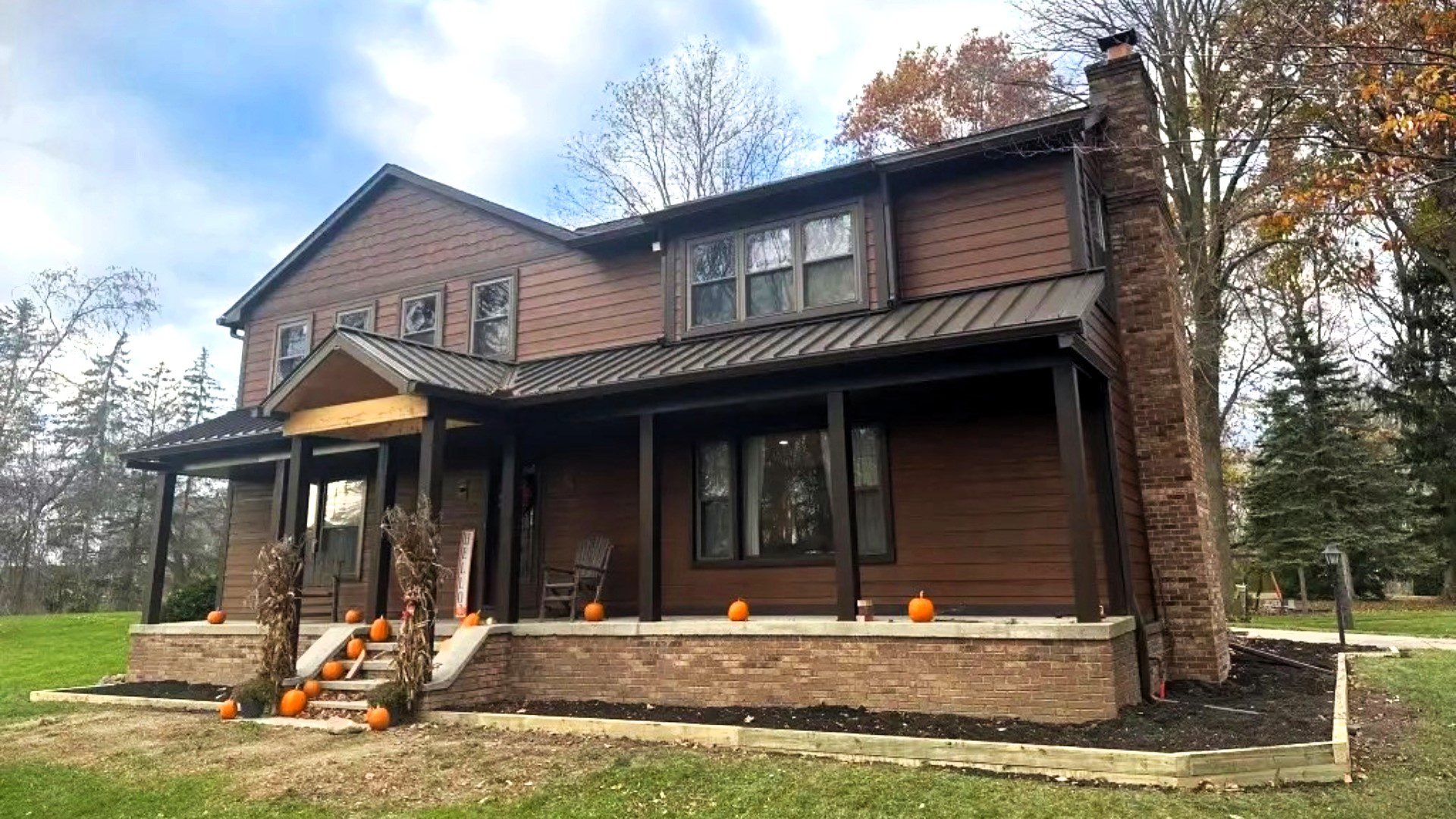Rising energy costs got you worried about your monthly bills? You’re not alone. Michigan homeowners are discovering that simple upgrades to their home’s exterior can dramatically reduce energy consumption and save hundreds of dollars annually.
Here’s what many homeowners don’t realize: your gutters, siding, roofing, and decking work together as an integrated system that either helps or hurts your home’s energy efficiency. When these components are properly selected and maintained, they can significantly reduce heat transfer, minimize your HVAC system’s workload, and prevent costly issues like ice dams and mold growth.
At Leach Construction, we help Michigan homeowners optimize their home’s energy performance through smart exterior upgrades, creating an energy efficient home that saves money year-round. Let’s explore how each component contributes to a more efficient, comfortable, and cost-effective home.
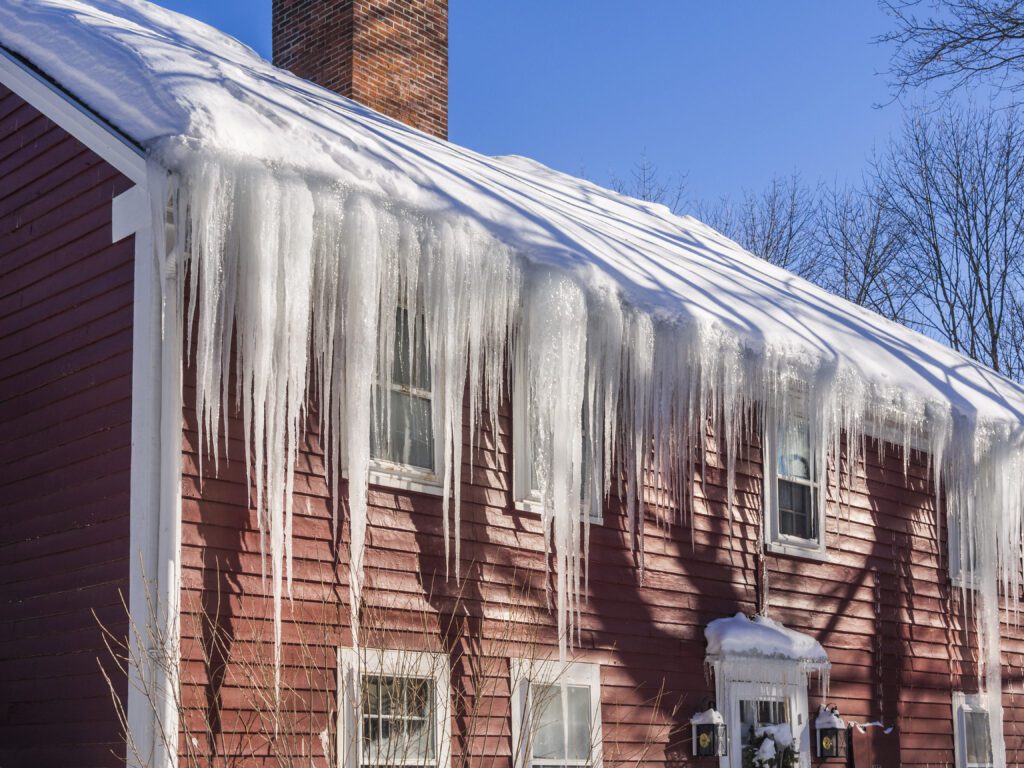
💧 How Gutters Impact Your Home’s Energy Efficiency
Most homeowners think of gutters as simple water management tools, but energy efficient gutters play a crucial role in your home’s overall energy performance. When gutters fail, the consequences extend far beyond a little water damage.
Foundation Protection Saves Energy
Proper water drainage protects your home’s foundation and basement insulation from moisture damage. When water infiltrates your foundation or basement, it can compromise insulation effectiveness, leading to increased heat transfer and higher energy bills.
Well-functioning gutters direct water away from your home’s foundation, preserving the integrity of your insulation and maintaining consistent indoor temperatures.
Ice Dam Prevention
In Michigan’s harsh winters, ice dams are a serious threat to both your roof and your energy efficiency. These ice formations occur when poor insulation allows heat to escape through your roof, melting snow that then refreezes at the roof edges.
Properly functioning gutters allow melting snow to flow freely, preventing the pooling and refreezing that creates ice dams. This protects your roof, siding, and insulation from damage while maintaining your home’s energy efficiency.
Essential Gutter Maintenance
Regular gutter maintenance is crucial for energy efficiency:
- Clean gutters seasonally – Remove leaves, debris, and buildup that can cause clogs
- Check for proper drainage – Ensure water flows freely toward downspouts
- Inspect for damage – Look for cracks, rust, or loose connections
- Consider gutter guards – Reduce maintenance needs and improve water flow
Don’t underestimate these “unsung heroes” of energy efficiency – properly maintained gutters protect your home’s insulation and structural integrity.
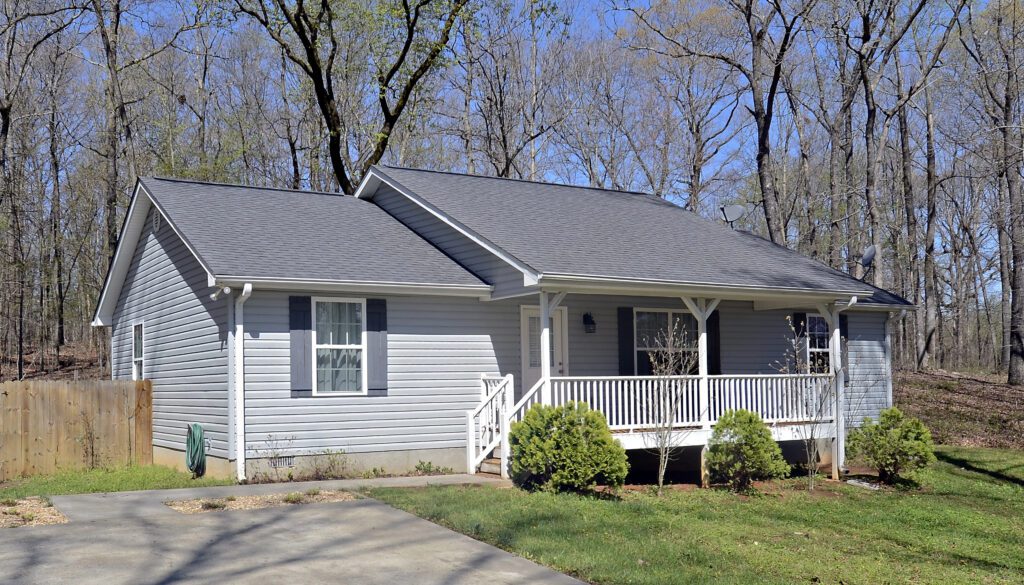
🏠 Maximize Energy Savings with Smart Siding Choices
Your home’s siding is more than just curb appeal – it’s a critical component of your home’s thermal envelope. The right siding choice with energy efficient siding materials can significantly reduce energy costs and improve year-round comfort.
Insulating Properties Matter
Different siding materials offer varying levels of insulation and energy efficiency. Energy-efficient siding options include:
- Insulated vinyl siding – Offers excellent thermal performance and low maintenance
- Fiber cement siding – Provides superior insulation and durability
- Wood siding with proper backing – Natural insulation with proper installation
In Michigan’s extreme temperature variations, choosing siding with good insulating properties is essential for minimizing heat transfer and reducing HVAC workload.
Reflective and Radiant Barrier Technology
Reflective coatings and radiant barriers can dramatically improve your siding’s energy performance:
- Reflective siding – Reflects solar heat, reducing cooling costs in summer
- Radiant barriers – Installed behind siding to provide additional insulation
- Light-colored materials – Reduce heat absorption and urban heat island effects
These technologies work together to keep your home cooler in summer and warmer in winter, reducing energy consumption year-round.
Siding Maintenance for Energy Efficiency
Regular siding maintenance preserves energy efficiency:
- Clean annually – Remove dirt and grime that can affect reflective properties
- Inspect for damage – Repair cracks or holes that compromise insulation
- Refresh protective coatings – Maintain reflective properties with periodic repainting
Well-maintained siding protects your home’s insulation and maintains optimal energy performance for years.
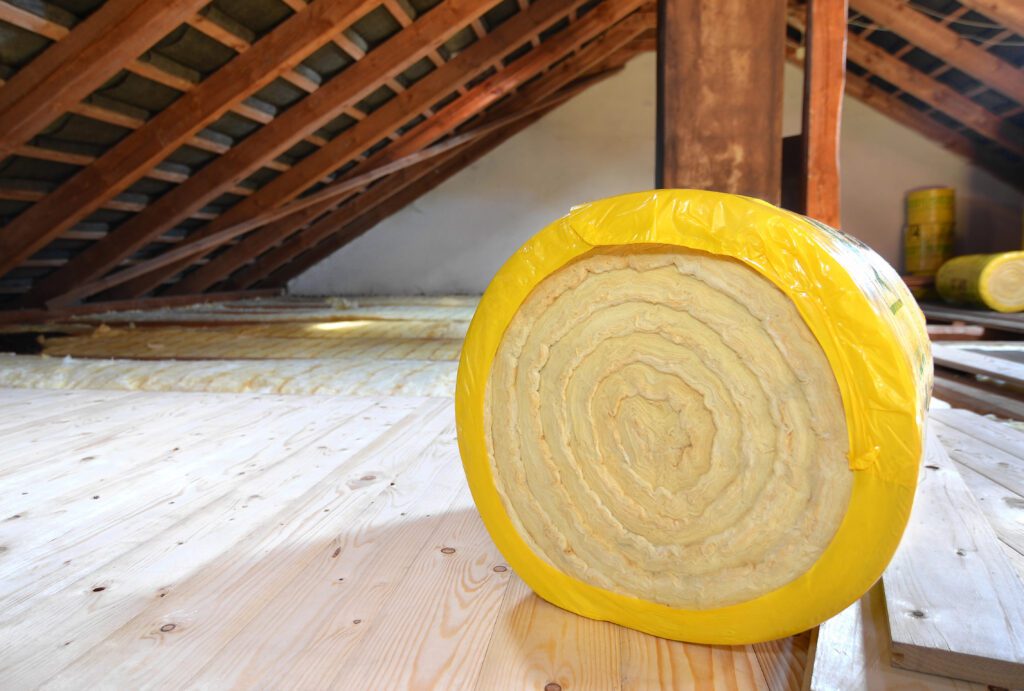
🏠 Your Roof: The Ultimate Energy Efficiency Game-Changer
Your roof is your home’s primary defense against energy loss. The right energy efficient roofing materials and installation can dramatically reduce heating and cooling costs while improving indoor comfort.
Smart Roofing Material Selection
Different roofing materials offer distinct energy efficiency benefits:
- Metal roofing – Excellent heat reflection and durability
- Tile roofing – Natural insulation properties and longevity
- Asphalt shingles – Cost-effective with good energy performance when properly installed
- Cool roof materials – Specially designed to reflect heat and reduce cooling costs
The key is choosing materials that work well in Michigan’s climate while providing the insulation and reflective properties your home needs.
Cool Roof Technology Benefits
Cool roof technology is revolutionizing home energy efficiency:
- Reflective coatings – Reduce heat absorption by up to 50%
- Light-colored materials – Reflect more sunlight than dark surfaces
- Specialized membranes – Provide superior insulation and weather protection
Cool roofs not only reduce your energy bills but also help combat urban heat island effects, making your home part of the environmental solution.
Ventilation: The Often-Overlooked Component
Proper roof ventilation is crucial for energy efficiency:
- Ridge vents – Allow hot air to escape from your attic
- Soffit vents – Provide fresh air intake for proper circulation
- Balanced systems – Ensure consistent airflow and temperature regulation
Good ventilation prevents moisture buildup, reduces cooling costs, and protects your insulation from heat damage.
When you invest in a quality roof, you’re not just protecting your home – you’re creating a more comfortable, efficient living environment that saves money for decades.
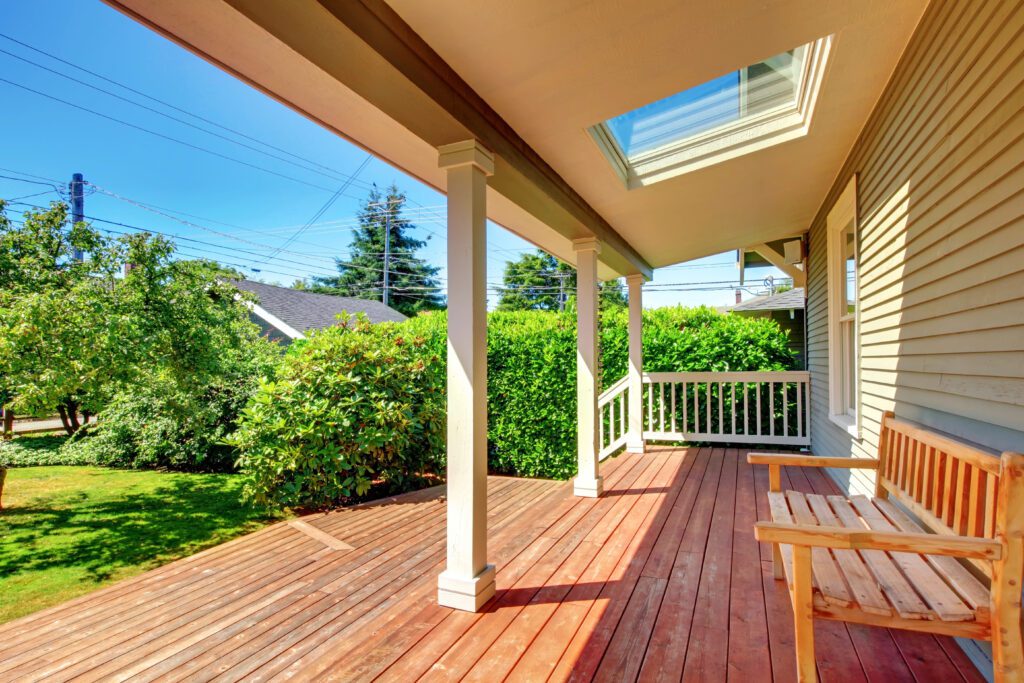
🌳 Smart Decking Choices for Energy Efficiency
Your deck might seem like an unlikely contributor to energy efficiency, but thoughtful decking choices can create an energy efficient deck that reduces cooling costs and improves your home’s overall energy performance.
Energy-Efficient Decking Materials
Choose materials that work with Michigan’s climate:
- Composite decking – Reflects more heat than traditional wood
- Light-colored materials – Reduce heat absorption and stay cooler
- Sustainably sourced wood – Natural insulation with environmental benefits
- Recycled materials – Reduce environmental impact while maintaining performance
Design Features That Save Energy
Smart deck design can significantly impact your home’s energy efficiency:
- Shade structures – Pergolas and awnings reduce direct sun exposure
- Strategic positioning – Block harsh afternoon sun from entering your home
- Integrated landscaping – Plants and trees provide natural cooling
- Proper ventilation – Ensure airflow to prevent heat buildup
Maintenance for Long-Term Efficiency
Regular deck maintenance preserves energy efficiency:
- Clean regularly – Remove debris that can trap heat
- Inspect for damage – Address issues before they affect performance
- Refresh finishes – Maintain reflective properties with proper staining or sealing
With the right materials and design, your deck becomes an energy-saving asset that enhances both comfort and efficiency.
🔄 The Power of Integration: When Everything Works Together
The real magic happens when your gutters, siding, roofing, and decking work as an integrated system. Each component supports the others, creating a synergistic effect that maximizes energy efficiency and cost savings.
For example, a well-designed roof with reflective materials reduces heat transfer, while quality siding minimizes heat loss. Efficient gutters protect your insulation from moisture damage, and strategic decking provides shade that reduces cooling costs.
This integrated approach delivers:
- Reduced energy bills – Lower heating and cooling costs year-round
- Improved comfort – More consistent indoor temperatures
- Environmental benefits – Reduced carbon footprint and energy consumption
- Long-term savings – Durable improvements that pay for themselves
While the initial investment in energy-efficient exterior improvements may seem significant, the long-term savings and environmental benefits make it a smart financial decision that pays dividends for decades.
🏆 Transform Your Home’s Energy Performance Today
Michigan’s extreme weather conditions make energy efficiency more than just a nice-to-have feature – it’s essential for comfort and cost control. By optimizing your gutters, siding, roofing, and decking, you create a comprehensive system that reduces energy consumption, lowers utility bills, and improves your home’s overall performance.
Don’t let another season pass with inefficient exterior components costing you money. The right improvements now can save hundreds of dollars annually while making your home more comfortable and environmentally responsible.
Ready to Maximize Your Home’s Energy Efficiency?
Contact Leach Construction today to discuss how we can help transform your home into an energy-efficient powerhouse. Our experienced team specializes in integrated exterior improvements that deliver maximum energy savings and long-term value.
From energy-efficient roofing and siding to smart gutter systems and sustainable decking, we’ll help you create a home that’s comfortable, efficient, and cost-effective year-round.
Your energy-efficient home is just a consultation away. Let’s make it happen together!

